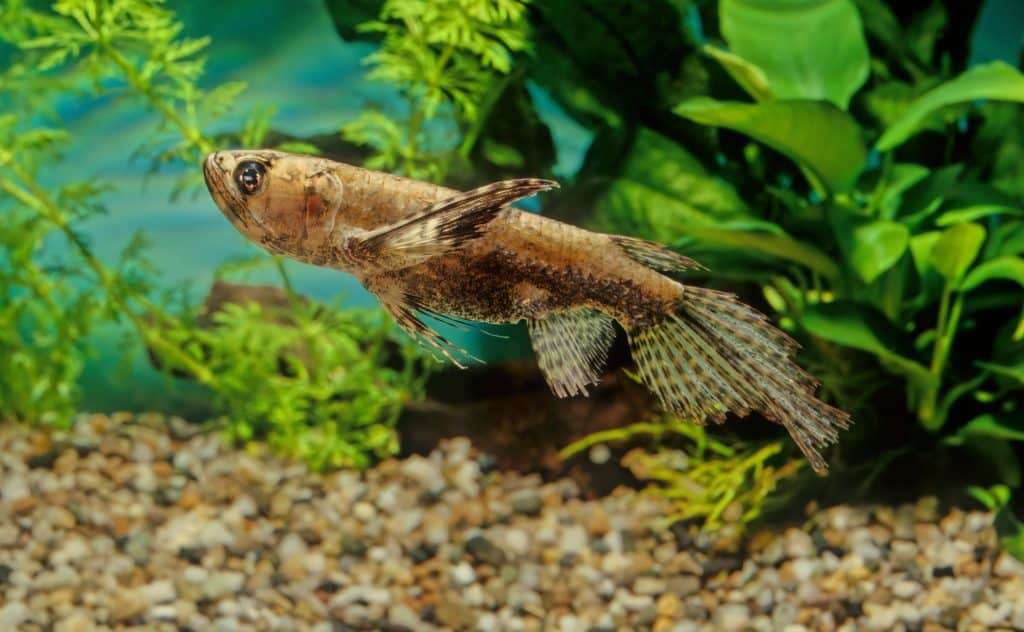
Size
15cm
Physical Characteristics and behavior
The Pantodon buchholzi is an elongated creature with a compressed body, a more flattened back and head, ventrally vented to the fins of the pelvis, a huge mouth with numerous teeth, and a conspicuous lower jaw that faces upward. Because of how the eyes are built, they can simultaneously view up and down.
Habitat
Marshes, quiet ponds, flooded areas, and peaceful backwaters of streams and rivers are P. buchholzi’s natural habitats. They seek for floating objects, especially plants, because they may contain prey on the leaves and stems above them and offer them cover from predatory birds’ sight.
Temperament
It’s a fantastic opportunity to see these fish in action! This species obviously has the potential to be aggressive in terms of attitude. They will fight to keep control of the top portion of the tank because they see anything else as a threat to their food source.
Keeping as Pet

- Tank Size
For an African butterfly fish, a tank with a minimum capacity of 40 gallons is advised. But that only accounts for a portion of the problem. It’s crucial to purchase a long tank rather than a tall one. Any area below these fish won’t see much use because they spend practically all of their time near the water’s top. This implies that they will have significantly less useful room in a deep 40-gallon aquarium than in a shallow, wide tank that can store the same volume of water.
- Water Parameters
One of the most crucial elements of African Butterfly Fish maintenance is maintaining the correct water parameters. Only under highly particular conditions, which must be as stable and consistent as possible, can this species flourish. Make sure you’re comfortable with the idea of operating inside smaller windows than other freshwater fish because this is the area where most owners struggle (if they’re not prepared).
75 to 86 degrees Fahrenheit for the water
pH range: 6.5 to 7. (this is where you should pay the most attention)
1–10 KH scale of water hardness
Since this species can be extremely sensitive to the conditions in their tank, it’s crucial to keep a close eye on these levels. You cannot check in on this fish whenever you want to. Instead, establish a programme and regularly test these characteristics. Get a trustworthy testing kit that will provide accurate readings, and use it frequently (we like doing this every two days).
- Feeding
Perfect African Butterflies Fish food should be designed around their nature as a predator. These fish spend their time in the wild scanning the surface in search of little insects and other fish to eat. In contrast to other species, you cannot rely solely on flakes and pellets. These fish frequently turn down this type of meal. Even if yours accepts these, they don’t have the nutritional qualities this species requires to be anything more than a different pleasure.
This implies that you must provide them with a lot of meaty live food. Several knowledgeable owners vouch that crickets are their preferred food, but you can also give them different insects or even feeder fish. 2-4 times a day is the ideal feeding plan for African butterfly fish. Because it gives them more excitement and matches their normal eating pattern, we want to aim for the higher end of that range. Nevertheless, don’t overfeed them!
- Tank mates
The following African butterfly fish species make good tank companions:
- Nerite Snails
- Kuhli Loach (if the tank is large enough)
- Cory Catfish
- Rope Fish (you’ll need a large tank for this)
- Bristlenose Pleco
- Rubber Lip Pleco
Table





